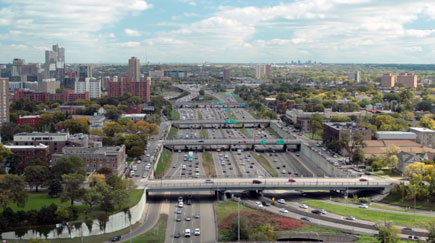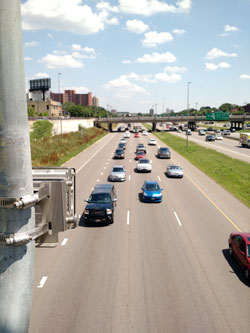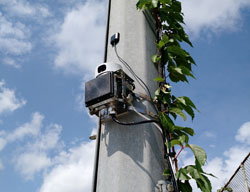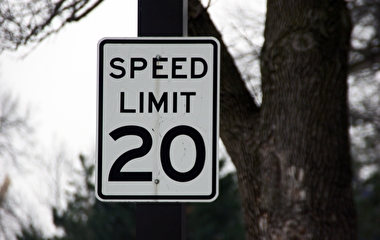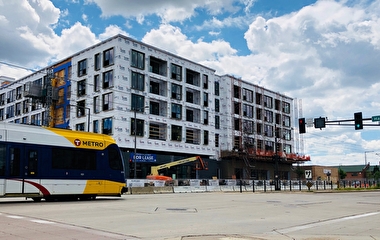Using cutting-edge technology and the close-to-campus location of a Twin Cities crash hot spot, University of Minnesota researchers have successfully transformed a high-crash stretch of interstate into a testbed for the connected vehicles that could help eliminate these crashes in the future.
“We now have high-resolution radar sensors covering two-thirds of a mile on I-94, giving us nearly continuous coverage of the trajectories of 85,000 vehicles a day, along with cameras giving us real-time verification of that information. It is an amazing amount of data,” says John Hourdos, director of the U’s Minnesota Traffic Observatory (MTO). “This is the highest resolution of traffic data I can imagine at a location that experiences at least one crash every two days, and a lot of valuable research can be done with it.”
cameras, radar stations, and other technologies.
New disruptive technologies such as vehicle-to-vehicle (V2V) and vehicle-to-infrastructure (V2I) communication have the potential to change the future of transportation in a revolutionary way. Much like the seat belt and airbags in the past, V2V/V2I-equipped vehicles are quickly becoming an industry standard with the aim of further improving driver safety. Unlike seat belts and airbags, however, the aim of V2V/V2I communication is not to help drivers survive crashes but to avoid them. V2V/V2I-capable vehicles—often referred to as connected vehicles (CVs)—capitalize on technologies including GPS, in-vehicle sensors, roadway sensors, and wireless communication to broaden the information available to the driver/vehicle unit.
“Just a few decades ago even the idea that we could prevent crashes was a dream, and now with connected vehicles we have seen wonderful uses such as intelligent emergency braking, which could effectively be the end of rear-end collisions,” Hourdos says. “However, the development of these systems, applications, and vehicles requires testing, and in order to test them we need data.”
To aid research in this ground-breaking field, Hourdos has spearheaded the development and deployment of instrumentation and software to create a laboratory for CV application development and testing as well as fundamental research on driver behavior and traffic flow theory. Capitalizing on the existing I-94 Field Lab located in the I-94/I-35W “commons” in downtown Minneapolis—and with the support of the Roadway Safety Institute and the Minnesota Department of Transportation—a new, radar-based vehicle detection and traffic measurement collection infrastructure was established. Specifically, the objective of this effort was to create a testbed for CVs and expand infrastructure-based systems into the CV realm.
As part of this effort, seven radar stations have been deployed along a half-mile stretch of I-94 westbound. The stations collect high-resolution vehicle trajectory data for every vehicle that passes through the corridor. Each radar station is paired with a dedicated camera for calibration and validation purposes, and also to allow development of hybrid vehicle detection and tracking algorithms in the future. The data-collection infrastructure is supported by a comprehensive data warehousing and dissemination software architecture, which allows continuous collection and storage of all collected measurements in an efficient online database as well as a real-time shared memory space used by real-time applications.
Future plans for the CV testbed include partnering with other organizations, research institutions, and the federal government to help advance the development of CV technology, Hourdos says. In addition, MTO researchers plan to use the wealth of data to extend the existing I-94 queue warning system and adapt the system to traffic pattern changes resulting from construction on I-94 that is currently under way.
